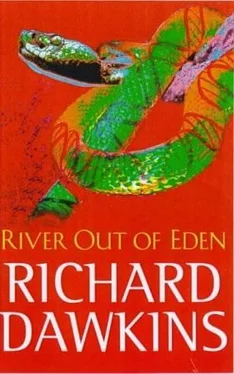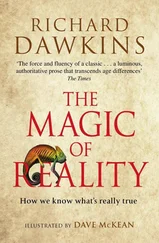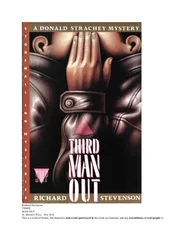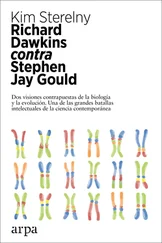What, then, determines which genes are switched on in a particular cell? The answer is the chemicals that are already present in the cell. There is an element of chicken-and-egg paradox here, but it is not insuperable. The solution to the paradox is actually very simple in principle, although complicated in detail. It is the solution that computer engineers know as bootstrapping. When I first started using computers, in the 1960s, all programs had to be loaded via paper tape. (American computers of the period often used punched cards, but the principle was the same.) Before you could load in the large tape of a serious program, you had to load in a smaller program called the bootstrap loader. The bootstrap loader was a program to do one thing: to tell the computer how to load paper tapes. But – here is the chicken-and-egg paradox – how was the bootstrap-loader tape itself loaded? In modern computers, the equivalent of the bootstrap loader is hardwired {24} into the machine, but in those early days you had to begin by toggling switches in a ritually patterned sequence. This sequence told the computer how to begin to read the first part of the bootstrap-loader tape. The first part of the bootstrap-loader tape then told it a bit more about how to read the next part of the bootstrap-loader tape and so on. By the time the whole bootstrap loader had been sucked in, the computer knew how to read any paper tape, and it had become a useful computer.
When an embryo begins, a single cell, the fertilized egg, divides into two; each of the two divides into four; each of the four divides to make eight, and so on. It takes only a few dozen generations to work the cell numbers up into the trillions, such is the power of exponential division. But, if this were all there was to it, the trillions of cells would all be the same. How, instead, do they differentiate (to use the technical term) into liver cells, kidney cells, muscle cells and so on, each with different genes turned on and different enzymes active? By bootstrapping, and it works like this. Although the egg looks like a sphere, it actually has polarity in its internal chemistry. It has a top and a bottom and, in many cases, a front and a rear (and therefore also a left and a right side) as well. These polarities show themselves in the form of gradients of chemicals. Concentrations of some chemicals steadily increase as you move from front to rear, others as you move from top to bottom. These early gradients are pretty simple, but they are enough to form the first stage in a bootstrapping operation.
When the egg has divided into, say, thirty-two cells – that is, after five divisions – some of those thirty-two cells will {25} have more than their fair share of topside chemicals, others more than their fair share of bottomside chemicals. The cells may also be unbalanced with respect to the chemicals of the fore-and-aft gradient. These differences are enough to cause different combinations of genes to be turned on in different cells. Therefore different combinations of enzymes will be present in the cells of different parts of the early embryo. This will see to it that different combinations of further genes are turned on in different cells. Lineages of cells diverge, therefore, instead of remaining identical to their clone-ancestors within the embryo.
These divergences are very different from the divergences of species we talked about earlier. These cell divergences are programmed and predictable in detail, whereas those species divergences were the fortuitous results of geographical accidents and were unpredictable. Moreover, when species diverge, the genes themselves diverge, in what I fancifully called the long goodbye. When cell lineages within an embryo diverge, both divisions receive the same genes – all of them. But different cells receive different combinations of chemicals, which switch on different combinations of genes, and some genes work to switch other genes on or off. And so the bootstrapping continues, until we have the full repertoire of different kinds of cells.
The developing embryo doesn't just differentiate into a couple of hundred different types of cells. It also undergoes elegant dynamic changes in external and internal shape. Perhaps the most dramatic of these is one of the earliest: the process known as gastrulation. The distinguished embryolo-gist Lewis Wolpert has gone so far as to say, “It is not birth, {26} marriage, or death, but gastrulation which is truly the most important time in your life.” What happens at gastrulation is that a hollow ball of cells buckles to form a cup with an inner lining. Essentially all embryologies throughout the animal kingdom undergo this same process of gastrulation. It is the uniform foundation on which the diversity of embryologies rests. Here I mention gastrulation as just one example – a particularly dramatic one – of the kind of restless, origami-like movement of whole sheets of cells that is often seen in embryonic development.
At the end of a virtuoso origami performance; after numerous foldings-in, pushings-out, bulgings and stretchings of layers of cells; after much dynamically orchestrated differential growth of parts of the embryo at the expense of other parts; after differentiation into hundreds of chemically and physically specialized kinds of cells; when the total number of cells has reached into the trillions, the final product is a baby. No, even the baby is not final, because the whole growth of the individual – again, with some parts growing faster than others – past adulthood into old age should be seen as an extension of the same process of embryology: total embryology.
Individuals vary because of differences in quantitative details in their total embryology. A layer of cells grows a little farther before folding in on itself, and the result is – What? – an aquiline rather than a retrousse nose; flat feet, which may save your life because they debar you from the Army; a particular conformation of the shoulder blade that predisposes you to be good at throwing spears (or hand grenades, or cricket balls, depending on your circumstances). {27} Sometimes individual changes in the origami of cell layers can have tragic consequences, as when a baby is born with stumps for arms and no hands. Individual differences that do not manifest themselves in cell-layer origami but purely chemically may be no less important in their consequences: an inability to digest milk, a predisposition to homosexuality, or to peanut allergy, or to think that mangos taste offensively of turpentine.
Embryonic development is a very complicated physical and chemical performance. Change of detail at any point in its course can have remarkable consequences farther down the line. This is not so surprising, when you recall how heavily bootstrapped the process is. Many of the differences in the way individuals develop are due to differences in environment – oxygen starvation or exposure to thalidomide, for instance. Many other differences are due to differences in genes – not just genes considered in isolation but genes in interaction with other genes, and in interaction with environmental differences. Such a complicated, kaleidoscopic, intricately and reciprocally bootstrapped process as embryonic development is both robust and sensitive. It is robust in that it fights off many potential changes, to produce a living baby against odds that sometimes seem almost overwhelming; at the same time it is sensitive to changes in that no two individuals, not even identical twins, are literally identical in all their features.
And now for the point that this has all been leading up to. To the extent that differences between individuals are due to genes (which may be a large extent or a small one), natural selection can favor some quirks of embryological {28} origami or embryological chemistry and disfavor others. To the extent that your throwing arm is influenced by genes, natural selection can favor it or disfavor it. If being able to throw well has an effect, however slight, on an individual's likelihood of surviving long enough to have children, to the extent that throwing ability is influenced by genes, those genes will have a correspondingly greater chance of winning through to the next generation. Any one individual may die for reasons having nothing to do with his ability to throw. But a gene that tends to make individuals better at throwing when it is present than when it is absent will inhabit lots of bodies, both good and bad, over many generations. From the point of view of the particular gene, the other causes of death will average out. From the gene's perspective, there is only the long-term outlook of the river of DNA flowing down through the generations, only temporarily housed in particular bodies, only temporarily sharing a body with companion genes that may be successful or unsuccessful.
Читать дальше












